
Aeonium tabulaefoeme forma cristata
This is a rather unusual crested form of the normal species tabulaeforme. Like the parent it has many of the same features, only on a smaller scale and multi branched.
Origin and Habitat: Garden origin (Nursery produced cultivar)
Synonyms:
See all synonyms of Aeonium tabuliforme
Description: Like most crests it will form some wild shapes. It slowly grows into an undulating mound of twisted fan shaped sections and seems to to change in and out of its crested mode during the years.
Subspecies, varieties, forms and cultivars of plants belonging to the Aeonium tabuliforme group
 Aeonium tabuliforme (Haw.) Webb & Berthel.: Stemless, ground hugging, rosette. Usually single or offsetting which used to be flat as a pancake.
Aeonium tabuliforme (Haw.) Webb & Berthel.: Stemless, ground hugging, rosette. Usually single or offsetting which used to be flat as a pancake. Aeonium tabuliforme f. cristatum hort.: It slowly grows into an undulating mound of twisted fan shaped sections and seems to to change in and out of its crested mode during the years.
Aeonium tabuliforme f. cristatum hort.: It slowly grows into an undulating mound of twisted fan shaped sections and seems to to change in and out of its crested mode during the years.
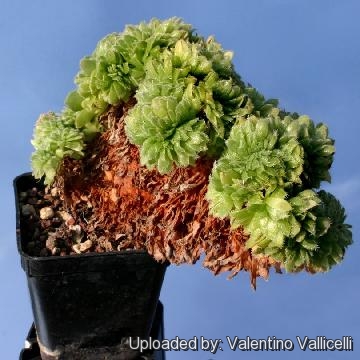 Aeonium tabuliforme f. cristatum Photo by: Valentino Vallicelli
Aeonium tabuliforme f. cristatum Photo by: Valentino Vallicelli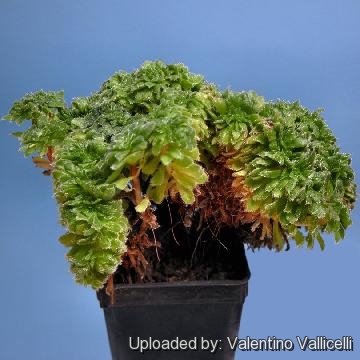 Aeonium tabuliforme f. cristatum Photo by: Valentino Vallicelli
Aeonium tabuliforme f. cristatum Photo by: Valentino Vallicelli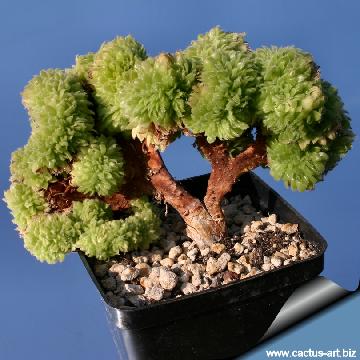 Aeonium tabuliforme f. cristatum Photo by: Cactus Art
Aeonium tabuliforme f. cristatum Photo by: Cactus Art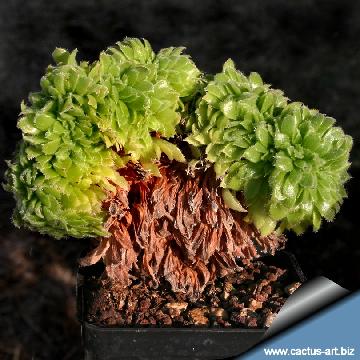 Aeonium tabuliforme f. cristatum Photo by: Cactus Art
Aeonium tabuliforme f. cristatum Photo by: Cactus Art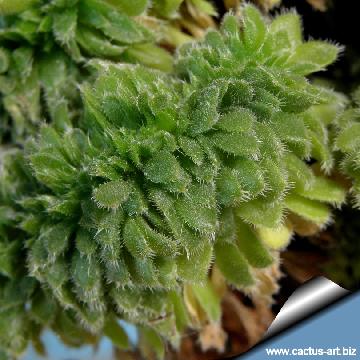 Aeonium tabuliforme f. cristatum Photo by: Cactus Art
Aeonium tabuliforme f. cristatum Photo by: Cactus Art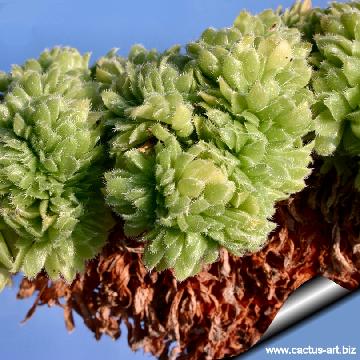 Aeonium tabuliforme f. cristatum Photo by: Cactus Art
Aeonium tabuliforme f. cristatum Photo by: Cactus ArtCultivation and Propagation: In temperate regions, Aeoniums will grow almost all year, only resting a bit during the hottest part of summer. This easy species is suited for pot culture and prefers light shade or shade. It needs moderate water in summer, keep dry in winter Fairly prone to stem root rot; do not let water sit on the rosette crown. Happy in just about any soil type, as long as adequate drainage is provided. However pot-grown specimens appreciate rich soil. Hardy only to -2 degrees C, it needs protection in Winter. Thrives indoors as a houseplant, too! Watch out for snails!! They love this plant.
Crested growth: Unlike 'monstrose' varieties of plants, where the variation from normal growth is due to genetic mutation, crested growth can occur on normal plants. Sometimes it's due to variances in light intensity, or damage, but generally the causes are unknown. A crested plant may have some areas growing normally, and a cresting plant that looks like a brain, may revert to normal growth for no apparent reason. If you have any of the crested part left you need to remove the normal growth and leave the crested part behind this will need to be done regularly.
Reproduction: It can be propagated from cuttings.
More...
















